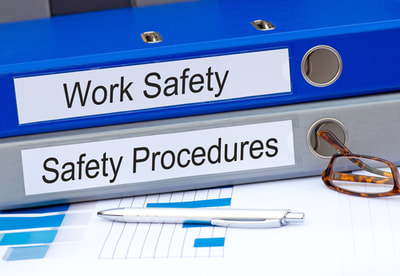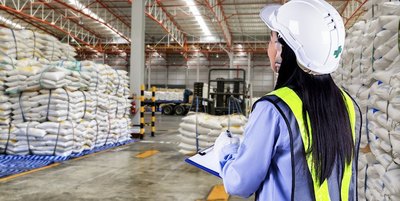WorkSafeBC is honoured to serve 2.33 million workers and 231,000 registered employers in our province. They collaborate with them to prevent injury or illness, and help employers comply with the Occupational Health and Safety Regulation and the Workers Compensation Act. When work-related injuries or diseases occur, WorkSafeBC's no-fault insurance system provides peace of mind for workers and their families, and for employers. They provide compensation and support workers in their recovery, rehabilitation, and safe return to work. WorkSafeBC partner's with health care providers to ensure workers get the treatment they need to resume their normal routines.
Online JHSC Training British Columbia: 14 Students
ONLINE SELF STUDY 8 HOUR JOINT HEALTH SAFETY COMMITTEE TRAINING COURSE BRITISH COLUMBIA (14 STUDENTS)
Empire Safety Solutions is proud to present our Online Joint Health and Safety Committee Training BC course which is in full compliance with the BC Occupational Health and Safety Regulations & Workers Compensation Act. Our 8 hour online joint health and safety committee JHSC training course, will assist employers and participants on how to start-up a committee at your workplace, how to effectively implement a JHSC, learn about duties and functions of members and as a team, how/when to conduct incident investigations and how/when to conduct workplace inspections.
This course has NO TIME LIMIT for completion. You may complete the course at your own pace. However, it is recommended for the employer to give each participant a due date for completion (usually one week should suffice). The course consists of 8 hours of study material and how long it will take each participant to complete the course will be based on their studying apptitude.
This 8 hour self study course consists of study material in the form of videos, power point presentations, forms and worksafebc handouts.
Section 1 (4 Hours of Study Material): Joint Health and Safety Committee Functions
Section 2 (2 Hours of Study Material): Incident/Accident Investigations
Section 3 (2 Hours of Study Material): Formal Workplace Inspections
CERTIFICATION INSTRUCTIONS
- To place your order please click on the ADD TO CART button BELOW. Leave the quantity section to 1 when placing your purchase.
- Once you have successfully made your purchase, all study material and exams will be automatically forwarded to your provided email address (please ensure you spell your email correctly).
- Download the study material and forward the downloads to the other students by email. Or you can contact us info@empiresafetysolutions and one of our staff will email you the study material.
- Complete the 3 final tests for each section and then email us the exams to info@empiresafetysolutions (PUT IN SUBJECT LINE: JHSC TESTS).
- Please send the 3 tests in one email if possible; not seperate emails.
- The 3 tests are mostly multiple choice but do have some written component sections. Your tests(s) will then be marked by one of our consultants and your signed certificate of completion will be forwarded to you by email within 2 business days.
- No one fails this course. If participants recieve less than 80% on their tests our instructor will email the participant and advise on which questions need to be re-looked at. The tests are more for due diligence purposes so we have a record of what the student learned.
Rules for health and safety in Alberta’s workplaces fall under the Occupational Health and Safety Act, Regulation and Code. Alberta Occupational Health and Safety is responsible for enforcing OHS laws through inspections, investigations and prosecutions. The legislation establishes minimum standards for safe and healthy practices in Alberta workplaces.
Workers and employers have a shared responsibility to comply with health and safety legislation. For information on OHS legislation compliance and enforcement, see Compliance and Investigations. Workers, employers and other parties regulated by OHS legislation have responsibilities under the law in Alberta.
SAFE Work Manitoba is the unified prevention organization responsible for promotion and delivery of services related to workplace injury and illness prevention. They are committed to creating a genuine culture of workplace safety and prevention by working with their partners to build a safer Manitoba for all workers. Workplace Safety and Health enforces The Workplace Safety and Health Act and its associated Regulations in order to protect the safety and health of workers in Manitoba. Workplace Safety and Health’s inspection and investigation activity focuses on improving legislative compliance in order to eliminate workplace fatalities, injuries and illnesses.
Safe At Work Ontario is the Ministry of Labour strategy to protect workers’ health and safety on the job. The ministry enforces the Occupational Health and Safety Act. The Prevention Council advises the Minister of Labour and the Chief Prevention Officer on a wide range of occupational health and safety issues, including:
- prevention of workplace injuries and illnesses
- development of the provincial occupational health and safety strategy, and
- any significant proposed changes to funding and delivery of services under the Occupational Health and Safety Act.
The Ministry of Labour Relations and Workplace Safety promotes and protects safe and healthy workplaces through education, legislation, and enforcement. Learn more here about occupational health and safety regulations, asbestos, the Safety Information Management System, training and more. Under The Saskatchewan Employment Act, an employer must provide a safe and healthy workplace and establish and maintain an effective health and safety program and obtain input from the occupational health committee (OHC)
On January 1st 2016, the Commission de l'équité salariale (CÉS), the Commission des normes du travail (CNT) and the Commission de la santé et de la sécurité du travail (CSST) were merged into a new agency: the Commission des normes, de l'équité, de la santé et de la sécurité du travail (CNESST). Going forward, the CNESST provides a single point of contact for workplace-related services in Quebec. The CNESST is the body to which the Government of Quebec has entrusted the administration of the Act respecting occupational health and safety (AROH), and whose purpose is to eliminate hazards to worker health and safety at the source.















